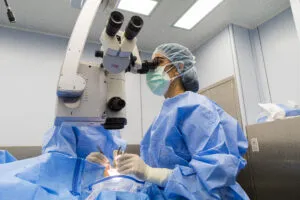Eye diseases
Strabismus

What is strabismus?
Strabismus is the deviation of one or both eyes, so that each eye looks in one direction, either continuously or only under certain circumstances. It can be convergent (inward deviation), divergent (outward deviation) or even upward or downward. The consequences it entails, which are not only aesthetic but also psychosocial, should not be underestimated, as this eye disease can affect self-esteem as well as personal and professional relationships.
Although it seems like a typical childhood problem and we are used to seeing children turn their eyes away, it is estimated that approximately 4% of the adult population also suffers from it.
Symptoms
Causes and risk factors
Treatment
If the eye deviation is significant, it becomes aesthetically evident and often entails insecurities, but it can affect vision as well. In fact, in adults with strabismus, (constant or intermittent) double vision is common, which can be very uncomfortable and disabling in everyday life and cause a stiff neck in cases where turning the head results in less double vision. However, in long-standing strabismus with childhood onset, we do not usually find double vision, since the brain ignores the image of the crooked eye and no symptoms appear, except for greater difficulty in calculating distances, perceiving depth, 3D vision or take in the entire visual field.

